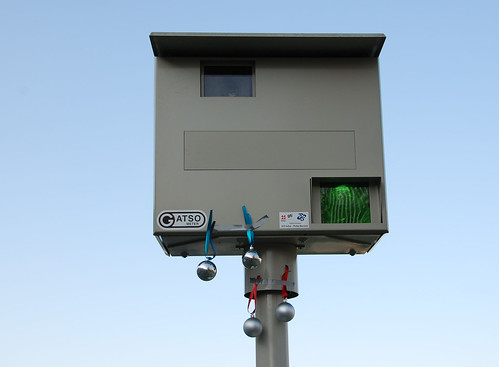1st place: France
2nd place: Germany
3rd place: Netherlands
4th place: Belgium
What's this? World Cup? No way, it's the motorway challenge, my subjective ranking of national highways, freeways, motorways, autoroutes, autobahnen, autosnelwegs, whatever you want to call them... I've driven all of these multiple times in the past year, and let me tell you why they're quite different.
Bringing up the rear, in 4th place, is Belgium. Belgium takes fourth because there are only four contenders in the contest -- Belgian roads are actually in a different league, a horribly underfunded and frustrating league. They're potholey, trafficky, and worst of all, terribly marked. Even with a TomTom telling you where and when to turn, you can still pick the wrong exit ramp, sub-exit ramp, left-exit, unmarked split, whatever. Horrible. Belgian autosnelwegs kind of redeem themselves at night, however, when their abundance of lighting really makes them shine. I've heard it's because they have so much nuclear energy to burn, and that's the best thing they can think of to do with it. Maybe Google should build a server farm there (actually, that would help me a ton, because Google Maps is excruciatingly slow here!).
Next up, in 3rd place, is my current home, Nederland. The roads themselves are fabulous, so smooth and quiet, at least when they're not under construction. The trouble is, they're almost always under construction. Between the road work and the traffic, which is what you'd expect it to be in the most densely populated country in Europe, driving just takes unreasonably long around here. When you have extra time on your hands for delays, however, they're a pleasure, with good signage, consistent traffic patterns, local & express lanes, and excellent rest stop plazas. The speed limit is the same as Belgium's, 120 kilometers per hour.
Speed, of course, is the main thing going for Germany's autobahns. Speed-hungry Americans at home with their car magazines dream of a beautiful Bavarian day in an ungoverned Porsche Carrera GT. In reality, even a Volvo can be fun to open up for a stretch of no-speed limit driving, and I enjoy doing so on occasion when, for example, I have to pick someone up across the border at Dusseldorf Airport. I've had my V40 up past 160 km/h (100 mph) a few times, and it glides pretty nice. The interesting thing is, though, in the land of Porsche and BMW, that there's always someone faster than you -- no matter how fast you go, and how white-knuckled you feel, you ALWAYS have to keep your eyes on the rear-view mirror because some red or black streak is about to whiz by you. And, famously, they're not shy about flashing headlights and horn-honking if you're in the left lane when they reach your backside. The autobahn is not all speed and roses, however: Germany is a pretty busy country, and the no-limit sections are only out in the countryside between big cities. There are plenty of 120, 90, and even 70 (in construction) km/h speed limits, and it gets quite tiring to be constantly speeding up and slowing down when you're traversing the country. Traffic can get pretty snarly, too, and there's nothing like cresting a hill at 140 km/h to discover a sea of brake lights and hazard lights three lanes wide as you slam on the brakes. The autobahn has great rest stop plazas, and the slight annoyance of having to pay 50 cents to use the toilet is mostly quenched by the fact that you get your 50 cents back in discount form when you buy a drink or anything. Between Germany and the Netherlands, the roads themselves are similar, Dutch rest stops are a little better, but the optional speed limit (official rule is "130 km/h recommended") wins by a mile. Or a kilometer.
In first place, France takes the gateau, even though its autoroutes are the only ones in the group with tolls -- expensive tolls, at that, like 14 Euro for 2 hours of driving! French speed limits are 130 km/h, marginally higher than Dutch and Belgian, rest stops are fine, similar to Dutch ones, and the roads themselves are generally in good shape without many construction delays. This all sounds fine, though not outstanding, but somehow everything comes together to make a very pleasant driving experience. I've driven all the way out to Bretagne, and the near-constant 130 km/h just feels more productive than the start-stop annoyance of the autobhn. Traffic somehow is rarely a problem, except right around Paris -- maybe it's the abundance of lanes (3 lanes each way most of the Autoroute du Nord from Lille to Paris), maybe there are fewer trucks, or maybe the lack of tailgating Audis makes it seem more relaxed. It would be easy to argue either side of all-out speed vs. average speed & convenience in the Germany/France contest. But, on my last trip to France, they truly frosted their own cake. Surely you know how infamous the French are for their propensity to go on strike: "GREVE" signs, farm fields on Paris streets, walkouts in the Metro, etc. Well, it turns out when the toll collectors strike, there's nobody to collect the toll! They just wave you right through. Viva la France!





























